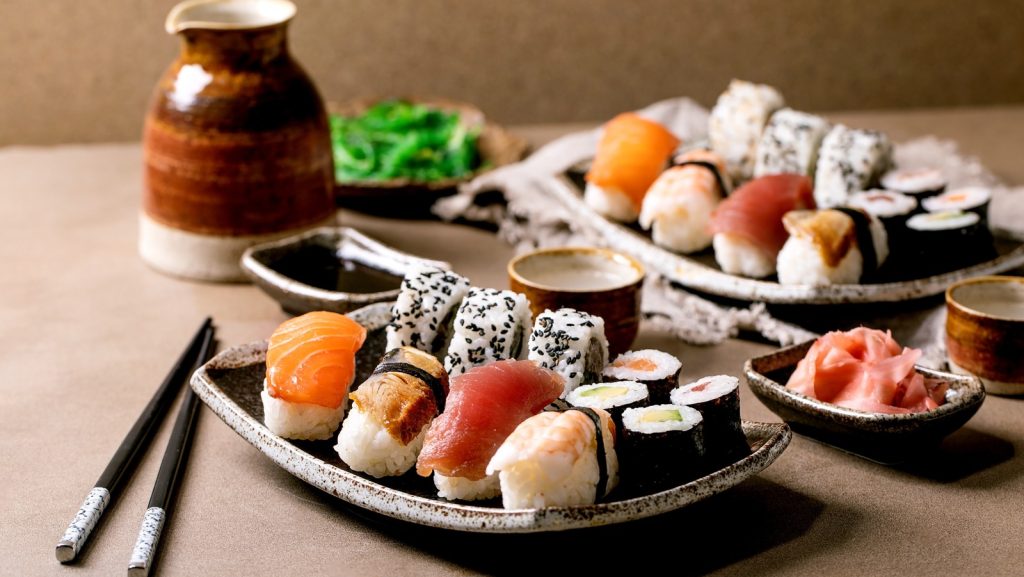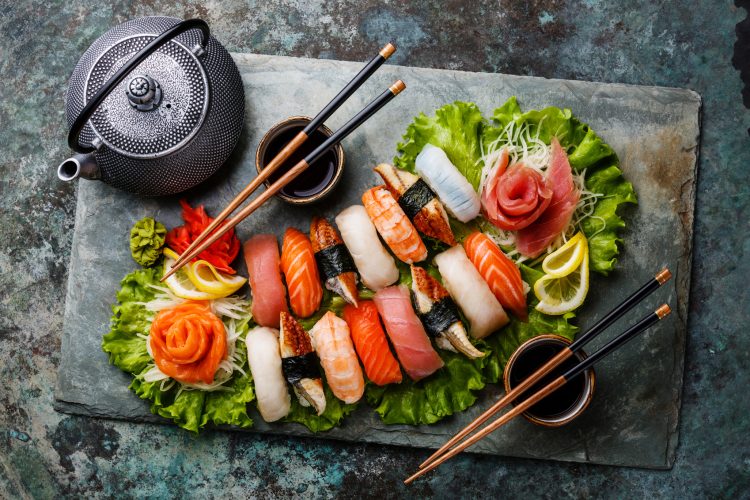The Essence of Fermentation: Red Vinegar Sushi
In a quaint traditional establishment in Nagoya, a server dressed in an elegant kimono presents a plate of sushi with a rice base that gleams a deep reddish-brown. Its flavor profile is mildly acidic, yet not overpowering. Upon inquiry, we discover that this dish is known as red vinegar sushi. In Japan, the diet is inherently tied to fermented foods, and red vinegar serves as a hallmark example of such culinary staples, facilitating the widespread acceptance and evolution of sushi throughout the country.
A Rare Delicacy
Historically, vinegar is regarded as one of the world’s oldest condiments. The Mizikan Museum in Handa, located in Aichi Prefecture, features various sections such as “The Storehouse of the Earth,” “Garden of Light,” and “Corridor of Wind,” which elucidate the vinegar brewing process from the early 19th century. The founder of the Mizikan company, Nakano Yosaburo, ingeniously repurposed leftover sake lees, transforming them into a type of vinegar. After a thorough maturation period of two to three years, the lees evolve into a rich, reddish liquid known as red vinegar. Traditionally, Japanese households favored rice vinegar, particularly in Edo-era sushi, which became a luxury item reserved for the affluent. However, Nakano’s red vinegar—affordable and delicious—skyrocketed in popularity, complementing the sushi in ways previously unimagined. Thus, the rise of red vinegar not only heralded a new era for Mizikan but also played a pivotal role in sushi’s journey across Japan.
Today, however, red vinegar is relatively costly, priced at approximately 3,000 yen per bottle (roughly $30), rendering red vinegar sushi a rarity in modern Japan.
The Spirit of Sake
Similarly, sake—a quintessential Japanese souvenir—is crafted through fermentation. The Chita Peninsula, renowned for its sake production, finds a focal point in the city of Kamezaki, home to the esteemed “Shikishima” brand. After the tragic closure of the Itō company in 2000, the ninth-generation heir, Itō Masaru, previously an IT professional, felt the weight of his family’s cultural legacy and returned to revitalize the business. We visit the company’s historic brewery, where Masaru enthusiastically invites us to taste their sake, which he pairs with miso. This unexpected combination creates a unique palate experience—the rich umami of the miso softens the sharpness of the liquor. Notably, sake lees—a byproduct of brewing—are easily procured, allowing for delightful culinary pairings.
The Diversity of Fermented Foods
Japanese fermented foods are wonderfully diverse, generally categorized into four primary types: alcoholic beverages, non-alcoholic drinks, pickles, and condiments. Prominent examples include sake and shōchū for the former, with sweet sake, pickled vegetables, and natto falling into the latter categories.
The foundation of traditional Japanese meals is encapsulated in the concept of “ichijū-sansai,” which translates to “one soup, three dishes.” Here, the soup is typically miso, accompanied by a main dish and two side offerings, complemented by rice and a small assortment of pickles. The history of pickling in Japan is ancient, with records suggesting the existence of fermented fish sauce dating back to the Jōmon period. By the Edo period, pickling practices proliferated, embedding pickles within the culinary fabric of Japanese culture. Their vibrant colors and refreshing flavors, when served alongside a steaming bowl of rice and a robust miso soup, provide not only sustenance but deep satisfaction. Some Japanese people opine that life without pickles would be unbearable. In Aichi Prefecture, the Kayatsu Shrine is dedicated to the “god of pickles,” hosting grand festivals each August, where pickle artisans from across the country gather to pay homage.
The Royal Taste of Echizen Crabs
Fermentation’s significance extends to high-end ingredients as well. The Echizen crab from Fukui Prefecture holds the distinction of being the sole crab presented to the imperial family, marked by its distinctive yellow label. While tasting this delicacy in Fukui, the chef served it with a specially crafted vinegar sauce, enhancing the sweet and delicate crab meat with a memorable burst of flavor. Additionally, dipping sauces for sashimi, such as soy sauce, perfectly complement both raw fish and sushi, and can also enhance grilled eel dishes.
Sweet sake, known as “amakaze,” has been described as the backbone of Japanese cuisine. Professor Kenji Maebashi from the Tokyo University of Agriculture and an expert in fermented foods emphasizes that while Western condiments are often derived from extensive flavor extractions of multiple ingredients, Japanese seasonings emerge from a few key ingredients through the fermentation process. The simplicity of Japanese culinary methods belies the complexity of the flavors within, proving that fermentation is indeed the artisan’s touch in Japanese cooking.

A Culture in Fermentation
The affinity of the Japanese for fermented foods springs from both their natural surroundings and a distinct wellness ideology. Aichi Prefecture ranks as one of Japan’s leading production areas for brewing, benefiting from abundant rivers like the Kiso and Yahagigawa that provide pristine water, alongside easily sourced ingredients such as rice, soybeans, and salt. The region’s warm and humid climate is perfectly suited for the fermentation process, while its geographical positioning ensures efficient shipping capabilities.
Moreover, the cultural emphasis on health bolsters the appeal of fermented foods, which contain numerous enzymes that enhance digestion and bolster immunity. In 2013, Japanese cuisine was recognized as a UNESCO Intangible Cultural Heritage, underscoring its global significance. Studies have highlighted the correlation between Japanese longevity and foods like miso soup, which incorporates ingredients like beans, rice, and wheat, all steamed and fermented with mold and yeast. It is said that Tokugawa Ieyasu, a formidable historical figure, carried rice balls made with miso as an energy source in battle, contributing to his impressive lifespan of 73 years amidst an era where the average life expectancy hovered around 40. Red miso, unique to Aichi, requires a lengthy fermentation process of two to three years—further solidifying its treasured status.
A Timeless Tradition of Natto
Another staple in the discussion of longevity is natto, a fermented product made from cooked soybeans, whose history in Japan extends over a millennium. Originally thought to have roots in China, natto offers a multitude of nutrients and is linked to various health benefits, including the management of cardiovascular ailments due to the presence of nattokinase.
The Japanese have intricately woven fermented foods into the core of their culinary culture. This mindful integration serves both to meet the growing consumer demand for healthy diets and to preserve the unique methodologies behind these foods—vital techniques that are not easily replicated. Additionally, the aesthetics of presentation play a crucial role, with a persistent ethos of “enjoying food with the eyes,” showcasing a commitment to artistry and seasonality in culinary practices.





















